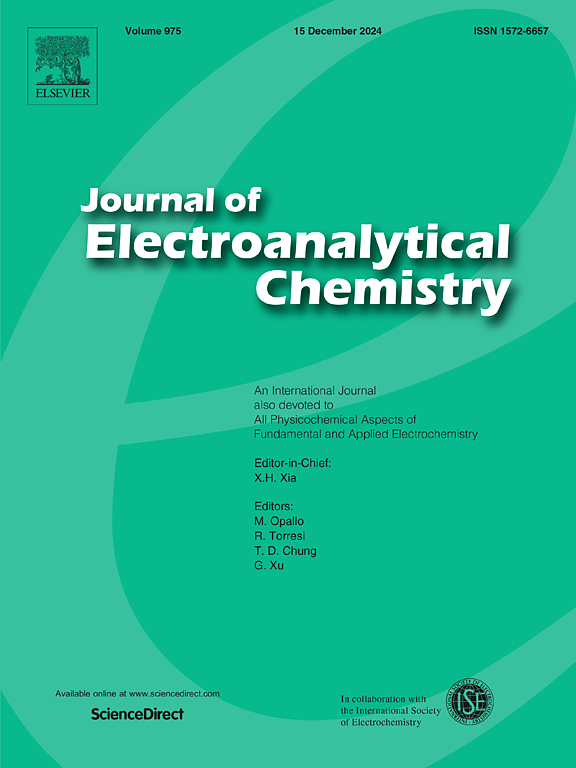A novel electrochemical sensor based on one-dimensional porous bimetallic CoCu-CN nanocomposites derived from MOF-on-MOF for simultaneous detection of acetaminophen and p-aminophenol
IF 4.1
3区 化学
Q1 CHEMISTRY, ANALYTICAL
引用次数: 0
Abstract
In this work, a MOF-on-MOF synthesis strategy was employed to successfully prepare (ZIF-8)-on-(CoCu-MOF) composites, which were further pyrolyzed at high temperature to obtain CoCu-CN nanomaterials. The morphological and structural properties of the materials were systematically investigated using SEM, FTIR, XRD and XPS. A novel sensor of CoCu-CN/GCE was constructed at a glassy carbon (GC) substrate, which exhibited excellent electrocatalytic activity to redox reactions of acetaminophen (PA) and p-aminophenol (4-AP). Under optimal conditions, the CoCu-CN/GCE sensor can be employed to detect simultaneously PA and 4-AP in the wider linear ranges of 0.05–270.00 μM and 0.05–170.00 μM, respectively with the lower detection limits of 0.020 μM and 0.019 μM respectively. Practical sample analysis for pharmaceutical and lake water gave satisfactory results. The proposed sensor displays excellent selectivity and stability with potential analytical applications

基于MOF-on-MOF的一维多孔双金属CoCu-CN纳米复合材料的电化学传感器用于同时检测对乙酰氨基酚和对氨基酚
本文采用MOF-on-MOF合成策略,成功制备了(ZIF-8)-on-(CoCu-MOF)复合材料,并在高温下进一步热解得到CoCu-CN纳米材料。采用扫描电镜(SEM)、红外光谱(FTIR)、x射线衍射(XRD)和XPS对材料的形貌和结构性能进行了系统的研究。在玻璃碳(GC)底物上构建了新型CoCu-CN/GCE传感器,该传感器对对乙酰氨基酚(PA)和对氨基酚(4-AP)的氧化还原反应表现出优异的电催化活性。在最优条件下,CoCu-CN/GCE传感器可同时检测PA和4-AP,线性范围分别为0.05 ~ 270.00 μM和0.05 ~ 170.00 μM,下限分别为0.020 μM和0.019 μM。实际样品分析结果令人满意。该传感器具有良好的选择性和稳定性,具有潜在的分析应用前景
本文章由计算机程序翻译,如有差异,请以英文原文为准。
求助全文
约1分钟内获得全文
求助全文
来源期刊
CiteScore
7.80
自引率
6.70%
发文量
912
审稿时长
2.4 months
期刊介绍:
The Journal of Electroanalytical Chemistry is the foremost international journal devoted to the interdisciplinary subject of electrochemistry in all its aspects, theoretical as well as applied.
Electrochemistry is a wide ranging area that is in a state of continuous evolution. Rather than compiling a long list of topics covered by the Journal, the editors would like to draw particular attention to the key issues of novelty, topicality and quality. Papers should present new and interesting electrochemical science in a way that is accessible to the reader. The presentation and discussion should be at a level that is consistent with the international status of the Journal. Reports describing the application of well-established techniques to problems that are essentially technical will not be accepted. Similarly, papers that report observations but fail to provide adequate interpretation will be rejected by the Editors. Papers dealing with technical electrochemistry should be submitted to other specialist journals unless the authors can show that their work provides substantially new insights into electrochemical processes.

 求助内容:
求助内容: 应助结果提醒方式:
应助结果提醒方式:


